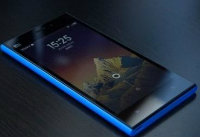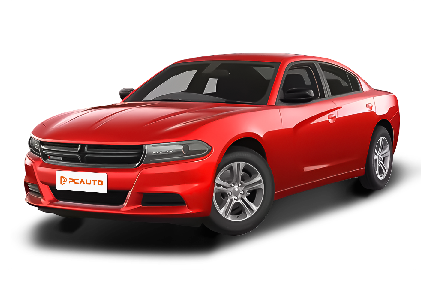Q
What gasoline does the Dodge Charger require?
In Malaysia, the Dodge Charger typically runs best on RON 95 or RON 97 unleaded petrol, depending on the engine under the hood. For example, models with the 3.6-liter Pentastar V6 are perfectly happy with RON 95. But if you're rolling in a high-performance beast like the Charger SRT Hellcat, which packs that monster 6.2-liter HEMI V8 with a supercharger, you'll want to feed it RON 97 to unlock all that raw power and get the best performance out of it.
Now, Malaysia's petrol grading is a bit different from other places. They use RON (Research Octane Number) as the standard here. RON 95 is the government-subsidized regular stuff, while RON 97 is the higher octane premium option – that's the good stuff for engines with higher compression ratios or forced induction, like turbos.
Here's the thing: consistently using a lower octane than recommended could lead to engine knocking or a noticeable drop in power. But don't sweat it if you mix them occasionally; it's not the end of the world. For Charger owners, besides nailing the right octane, keeping up with fuel system maintenance is key. Think regular fuel filter changes and using the fuel additives recommended by Dodge. That stuff helps keep the engine running efficiently and can even extend the life of your components.
If you're ever unsure about which petrol to use, your best bet is to check the owner's manual or swing by an authorized Dodge dealer. They'll point you to the fuel that's perfect for Malaysia's climate and your driving style.
Special Disclaimer: This content is published by users and does not represent the views or position of PCauto.
Related Q&A
Q
Is the 2023 Dodge Charger GT fast?
The 2023 Dodge Charger GT performs well in terms of performance. It is equipped with a 3.6-liter V6 naturally aspirated engine, with a maximum output power of 300 horsepower and a peak torque of 264 lb-ft. Paired with an 8-speed automatic transmission, it can accelerate from 0 to 100 km/h in about 6 seconds. This is quite fast for a mid - to large - sized sedan, especially suitable for the urban roads and highway driving needs in Malaysia. Although it's not the fastest model in the Charger series (for example, the Hellcat version has stronger performance), the GT version strikes a good balance between power and fuel economy. Meanwhile, it also offers rear - wheel drive or all - wheel drive options to meet different driving preferences. If you're after stronger performance, you can consider the Charger R/T or Scat Pack versions. They are equipped with V8 engines, providing more power but also consuming more fuel. Given the hot climate in Malaysia, it is recommended to regularly maintain the engine and cooling system to ensure the vehicle stays in good condition in the long run.
Q
Are Dodge Chargers 4-door?
Yes, the Dodge Charger is a classic four - door muscle car. Since its launch in 1966, most models have adopted a four - door design. In particular, all current models (as of 2023) feature a four - door layout, which combines the performance of American muscle cars with family practicality.
For car enthusiasts in Malaysia, although the Dodge brand is relatively niche there, the Charger can still be seen through parallel imports. Its iconic HEMI V8 engine and four - door design not only provide furious acceleration but also make it suitable for family use.
It's worth noting that four - door muscle cars are relatively rare in the Southeast Asian market. These types of vehicles usually focus more on straight - line acceleration performance. Compared with the common Japanese or European four - door sedans in Malaysia, the Charger's wide - body design and rear - wheel drive layout require drivers to adapt to the local rainy - climate driving habits.
In addition, Dodge announced in 2023 that the Charger will be transformed into a pure - electric vehicle. Future versions may continue with the four - door design, but the power system will be completely overhauled. This might be an interesting option for Malaysian consumers who are concerned about environmental trends.
Q
Are Dodge Chargers RWD or FWD?
The Dodge Charger is a classic American muscle car, primarily featuring rear-wheel drive (RWD). This design offers more powerful power output and a more engaging driving experience, making it a great fit for owners who pursue performance. In Malaysia, despite the variable road conditions and climate, rear-wheel-drive cars perform exceptionally well on dry roads. Some high-performance versions are even equipped with an all-wheel-drive (AWD) system to enhance stability on slippery surfaces. The Dodge Charger has never had a front-wheel-drive (FWD) version, which aligns with its muscle car positioning.
For Malaysian consumers considering a rear-wheel-drive model, it's important to pay attention to driving skills on rainy or slippery roads. You should control the throttle properly to avoid skidding. Meanwhile, rear-wheel-drive cars usually have a better front - rear weight distribution, offering more flexibility when cornering. However, their daily maintenance and tire wear might be slightly higher than those of front-wheel-drive cars. It's recommended to choose based on your personal driving habits and needs.
Q
Does the Dodge Charger have a 360 camera?
Yes, some high - end models of the Dodge Charger are indeed equipped with a 360 - degree panoramic camera system. This function provides a panoramic view around the vehicle through a combination of multiple cameras, which is especially useful for users in Malaysia. It allows for easier judgment of surrounding obstacles in narrow streets or crowded parking lots. Currently, the 360 - degree camera is mainly found in the Scat Pack or higher - spec versions of the Charger, but the specific configuration should be based on the configuration list provided by local dealers in Malaysia.
It's worth mentioning that the 360 - degree camera technology was initially used mainly in luxury models and has now gradually become popular in performance cars and family cars. It not only assists in parking but also provides a more comprehensive view at low speeds, reducing the risk of blind spots. Malaysian consumers should also note that these high - tech configurations may need to be optionally installed or bundled with specific packages. It is recommended to visit authorized dealers to personally experience the smoothness of the operation interface and the clarity of the images. At the same time, judge the practicality based on your own driving habits, because American muscle cars like the Charger, which are relatively wide in Malaysia, are in greater need of such auxiliary systems.
Q
Does the Dodge Charger have AWD?
The Dodge Charger does offer an all-wheel drive (AWD) version, but not all models come standard with this feature. It depends on the year and configuration. For example, the Charger GT and Charger R/T models from 2014 to 2021 could be optionally equipped with an AWD system, while high-performance versions like the Charger SRT Hellcat only offer rear-wheel drive (RWD) to maintain light weight and sporty performance. For Malaysian consumers, the AWD system can provide better traction and stability when driving on slippery roads or during the rainy season. However, it should be noted that AWD models may result in higher fuel consumption and maintenance costs.
In addition, as a representative of American muscle cars, the Dodge Charger's large-displacement V6 or V8 engines and classic design are quite niche in the local market. If you're considering a parallel import, you need to confirm whether it meets Malaysia's emission and certification standards. It is also recommended to learn about after-sales support and parts supply through official channels or authorized dealers.
Q
Does a Dodge Charger have horsepower?
Yes, the Dodge Charger does have powerful horsepower. The specific figures depend on the models of different years and configurations. For example, the latest Dodge Charger SRT Hellcat is equipped with a 6.2 - liter supercharged V8 engine, which can output up to 717 horsepower. The higher - performance Charger SRT Hellcat Redeye can even reach 797 horsepower, making it one of the rare high - performance four - door sedans in the Malaysian market. For Malaysian car enthusiasts, the Dodge Charger is not only famous for its classic American muscle car styling but also highly regarded for its powerful performance and unique rear - wheel or four - wheel drive configurations. In Malaysia, although such large - displacement models may face high import taxes and fuel costs, their excellent acceleration performance and unique driving experience still attract many performance - seeking car owners.
In addition, understanding horsepower data is important when choosing a car, but factors such as torque, gearbox tuning, and chassis settings should also be comprehensively considered, as these will all affect the actual driving experience. If you're interested in American muscle cars, you can also pay attention to other similar models like the Ford Mustang or Chevrolet Camaro. They also offer different levels of horsepower configurations to meet various driving needs.
Q
Does the Dodge Charger have traction control?
Yes, the Dodge Charger is indeed equipped with a Traction Control System (TCS). This feature is particularly useful in the driving environment of Malaysia. Especially on wet roads during rainy days or when making an emergency acceleration, the system will automatically monitor wheel slippage and adjust the engine output or apply braking force to ensure the vehicle remains stable. Traction control is an important part of modern automotive safety technology. Many Malaysian consumers will pay special attention to such configurations when purchasing high - performance cars like the Charger, as it can enhance driving safety.
In addition to traction control, the Charger may also be equipped with an Electronic Stability Program (ESC) and multiple driving modes to further meet the needs of different road conditions. In Malaysia's rainy climate and mixed urban road conditions, these systems can effectively reduce the risk of slippage and loss of control. It is recommended that car owners regularly check the system status to ensure normal functionality.
If you have any questions about the specific configuration of the model, you can inquire with the local authorized dealer for the latest specifications, as there may be slight differences in technical details among Chargers of different years or versions.
Q
Do Dodge Chargers have lane assist?
Some models of the Dodge Charger are indeed equipped with the Lane Assist system. For example, in high - end versions like the Charger GT or R/T Scat Pack, an advanced driver assistance package is usually installed, which includes Lane Keep Assist and Lane Departure Warning functions. These systems use cameras to monitor lane markings. When the vehicle unintentionally drifts out of the lane, they provide steering wheel correction or vibration alerts. They are especially suitable for long - distance driving or on highways in Malaysia.
It should be noted that the lane assistance functions may vary among models of different years and configurations. It is recommended to carefully check the configuration list of the specific model or consult the local dealer before purchasing a car. For Malaysian consumers, this kind of driver assistance technology can effectively improve driving safety, especially in areas with frequent rain and fog. However, drivers still need to stay focused because the system is only an auxiliary tool and cannot completely replace manual operation.
If you're interested in this kind of technology, you can also learn about similar functions in models of other brands such as Toyota and Honda. They are usually named "Toyota Safety Sense" or "Honda Sensing". The principles are similar, but the operation details are slightly different.
Q
What is the safety rating of the Dodge Charger?
The safety ratings of the Dodge Charger vary depending on the specific year and configuration. The latest models have performed well in the tests conducted by the National Highway Traffic Safety Administration (NHTSA) and the Insurance Institute for Highway Safety (IIHS) in the United States. For example, the 2023 Charger received a five - star overall rating from the NHTSA, and the IIHS gave it a "Good" rating in many of its crash tests, especially excelling in the frontal offset crash and side - impact tests.
For Malaysian consumers, although there is no local official agency conducting similar tests, the Charger's US - spec safety features such as the multi - airbag system, electronic stability control, blind - spot monitoring, and automatic emergency braking can still provide a high level of safety for drivers.
It's worth noting that safety ratings are not the only thing to consider. The road conditions during actual driving, the vehicle's maintenance status, and driving habits are also equally important. It is recommended that Malaysian car owners consider their own needs when purchasing a car and also pay attention to the vehicle's active safety features, such as adaptive cruise control and lane - keeping assist. These technologies can further enhance driving safety, which is especially useful on Malaysia's complex urban and highway roads.
Q
Is a Dodge Charger a drag car?
The Dodge Charger is indeed a model often used in drag racing. Especially its high - performance versions like the Charger SRT Hellcat, with its powerful HEMI V8 supercharged engine (capable of outputting over 700 horsepower) and an optimized rear - wheel drive system, have become a popular choice for drag racing. However, in essence, it's a high - performance muscle car that balances daily driving and track performance. It's not a pure competition vehicle specifically designed for drag racing (such as a dragster).
In Malaysia, due to the right - hand drive market restrictions, the Charger hasn't been officially introduced. But a small number of left - hand drive vehicles imported through parallel channels may appear on private tracks or in the modification circle. Local enthusiasts need to pay attention to the legal issues. If you're interested in drag racing, locally modified Japanese cars (such as the Mitsubishi Evolution or Nissan GT - R) are more common in Malaysia because there's better support for parts and tuning.
Although the Dodge Charger has high modification potential, one needs to consider the local maintenance network and fuel compatibility. It's recommended to conduct in - depth research before investing in modifications.
Popular Cars
Model Year
Car Compare
Car Photo
Latest Q&A
Q
Is the 1.5 L 4 cylinder?
Yes, a 1.5L engine is typically a 4-cylinder setup—the most common configuration for small to mid-sized displacements. This layout strikes a solid balance between fuel efficiency and power output, making it ideal for daily commuting and family use. Four-cylinder engines are relatively simple in design, cheaper to maintain, and benefit from proven technology that delivers smooth operation. You'll find this configuration widely used by mainstream brands like Honda, Toyota, and Mazda. While there are some 1.5L 3-cylinder options out there, the 4-cylinder remains the go-to choice, especially in models prioritizing durability and refinement. If you're shopping for a 1.5L-powered car, pay attention to specific tech features—turbocharging, direct injection, etc.—as these can significantly impact real-world driving dynamics and fuel economy.
Q
What is the displacement of a V8 engine?
The displacement of a V8 engine typically ranges from 4.0 to 6.2 liters, depending on the vehicle and its purpose. For example, high-performance sports cars often pack a 5.0-liter or larger V8, while trucks and SUVs usually stick with something between 4.3 and 5.7 liters. Known for its brute power and smooth operation, the V8 is a go-to for acceleration and towing—though its thirst for fuel is something buyers always weigh up.
These days, turbocharging has changed the game. Smaller-displacement V8s (like a twin-turbo 4.0L) can now deliver big-block performance with slightly better efficiency. And let’s not forget the sound—few things beat the roar of a tuned V8 exhaust, a big reason why enthusiasts love ‘em.
If you’re into V8s, keep an eye on local used car listings or auto shows—you’ll often spot some gems there.
Q
What is the difference between 1l and 1.2 L engine?
The key difference between 1-liter (1L) and 1.2-liter (1.2L) engines comes down to displacement—the total volume of all cylinders in an engine, measured in liters. Generally, a larger displacement means more power and torque, so a 1.2L engine will likely feel stronger during acceleration, highway driving, or when tackling hills with a load. That said, it’ll also drink a bit more fuel compared to the 1L.
The 1L, being smaller, prioritizes fuel efficiency, making it a smart pick for city commuting or everyday runs. On the flip side, the 1.2L’s extra performance often means higher manufacturing costs, which might bump up the car’s price tag. Plus, the 1L’s compact size fits better in smaller or budget-friendly models.
Your choice really hinges on driving needs: go for the 1.2L if you regularly hit the highway or want more grunt, but stick with the 1L if you’re mostly urban-bound and watching fuel bills. Oh, and don’t forget—tech like turbocharging or variable valve timing can squeeze near-equal performance from smaller engines these days, so specs alone don’t tell the full story. Always check how the engine’s tuned.
Q
What does 5.7 liter engine mean?
A 5.7-liter engine refers to a total displacement of 5.7 liters, meaning all cylinders combine for a total working volume of 5,700 cubic centimeters. Generally, a larger displacement allows the engine to take in more air and fuel, delivering stronger power and torque—making it ideal for performance-oriented vehicles or those built for heavy-duty work, like pickup trucks, full-size SUVs, or muscle cars.
In the local market, you’ll often find big-displacement engines in American-branded vehicles. These engines excel at high-speed cruising or towing heavy loads, though they do come with higher fuel consumption and increased running costs.
Thanks to advancing technology, many automakers now use turbocharging or hybrid systems to help smaller engines deliver power comparable to older, larger naturally aspirated units—like how some modern 2.0L turbocharged engines can match the performance of older V6 engines while being far more fuel-efficient.
If fuel economy is a priority, a smaller turbocharged or hybrid model might be the better choice. But if you value the smooth, raw power of a classic big-block, a 5.7-liter engine remains a timeless option.
Q
What liter engine is a V6?
The displacement of a V6 engine isn't set in stone—it typically ranges between 2.5 and 4.0 liters, depending on the vehicle's design and purpose. For example, a family sedan might pack a 2.5L or 3.0L V6, while performance cars or pickups could go for 3.5L or larger. Displacement directly impacts power output and fuel economy: bigger usually means stronger, but thirstier too.
Named for its six cylinders arranged in a V-shape, the V6 strikes a sweet spot—delivering smoother operation and better balance in a compact package compared to four-cylinder engines, while being more fuel-efficient than V8s. That's why it's a popular choice for midsize sedans and SUVs.
These days, with turbocharging becoming commonplace, smaller-displacement V6 turbos can match the punch of older, bigger engines while sipping less fuel. Choosing one? Think about your daily needs. A 2.5L works fine for city commutes, but if you're frequently hitting the highway or towing, step up to 3.0L or above.
View More


















Pros
Cons